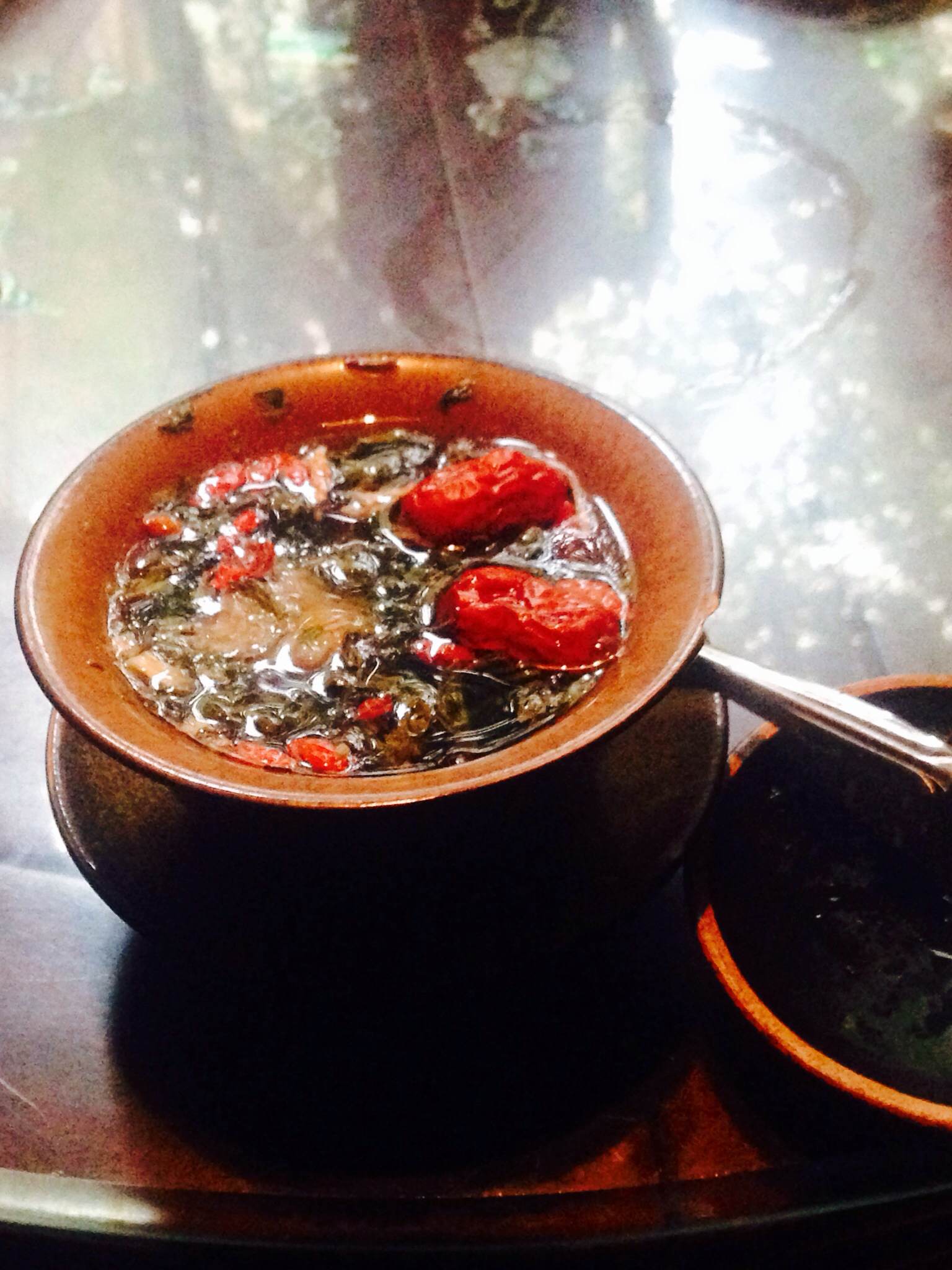

As I look at the colorful, traditional herbs and flower buds floating in our tea and attempted the customary method of straining while sipping, I note the uniquely sweet and earthy flavor, truly unlike any tea I’d sampled before. Lining the back wall of the parlor are photos of men and women grinning, grasping bright flowers and stalks against the mountainous topography of the Vietnamese highlands.
The vibrancy and distinctness of the Vietnamese tea culture struck me through Truong Xuan parlor, one of the tea houses in Hanoi dedicated to preserving the long-standing tea drinking tradition. The coffee trade has exploded internationally, as coffee has risen to Vietnam’s second-largest export in recent years. One American expat told us that when he first arrived in Hanoi 15 years ago, there was not a single coffee shop to be found. Now, while we struggled to find this traditional tea house, cafés advertising different coffees seem to pop up on every block. Several young locals have confirmed that they drink coffee more regularly than tea.
The question, of course, is whether the tea tradition remains prevalent in a rapidly modernizing Vietnam.
While the traditional Vietnamese tea culture may be dwindling, it remains both a powerful mirror of Vietnam’s history and a staple of its culture. The world’s most ancient tea was cultivated in southeast China, along the northern border of Vietnam, and spread into the agriculture and daily lives of ancient Vietnamese in the northern countryside thousands of years ago.
The Chinese, in many ways, shaped original Vietnamese tea culture, reflected in its near-sacredness and sign of privilege within the upper class. The tea is as engrained in Vietnam’s antiquity as the Chinese domination, beginning around 100 AD and continuing with varying degrees of strength for 18 centuries.
Alongside the ancient Eastern influence, the modern westernization of Vietnam can be found steeping in teapots: the strong French impact here in France’s favorite Indochina colony is inescapable, from Haussmann-style buildings occasionally dotting a street corner to the entirely Romanized alphabet. During colonization, French researchers cultivated farms and research institutions to expand Vietnam’s tea market, and in the 1950’s, Russian technology would introduce two tea factories that continued to increase production. Today, Vietnam is the tea industry’s seventh-largest exporter worldwide.
Vietnam has been struggling for 2000 years to develop its independence in the face of international hegemony. The 20th century alone, which contains three separate wars against Chinese, French, and American powers, reflects this poignantly. Today, the country is balancing its socialist ideals with an increasingly capitalist consumer culture. Students must take Ho Chi Minh studies, but they almost universally find it burdensome as opposed to enlightening.
Where one street in Hanoi holds the Temple of Literature, which tells the story of ancient Chinese education in Vietnam and looks as though it could have been plucked from China itself, the street across from it advertises, in English, Coca-Cola and H&M. We are seated in Truong Xuan parlor across from an obviously Chinese-style water pond and our menus are written in English. The dualism is almost exhausting.
And yet the flavor of the tea, uniquely unsweetened but with Vietnamese flower petals, is too earthy to be China green or English black. Small street stands all along Hanoi streets sell iced tea to protect against heat, and locals drag stools out onto the sidewalks (a scene that we have come to consider distinctly “Hanoi”) to sip and smoke cigarettes during lunch breaks. Vietnam may appear to be an amalgam of countless other cultures, but it has certainly developed one of its own.
